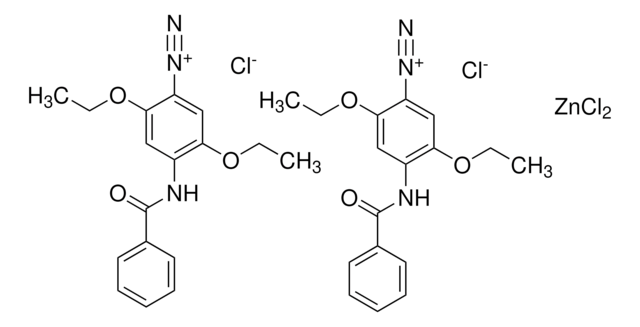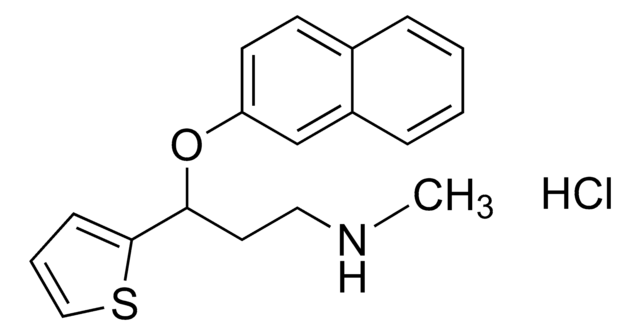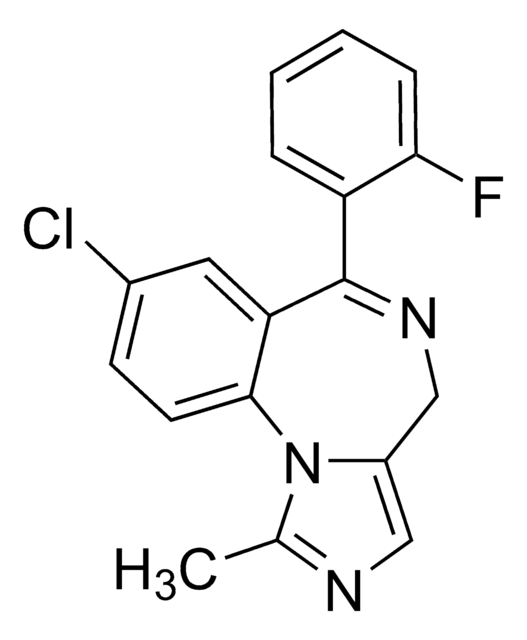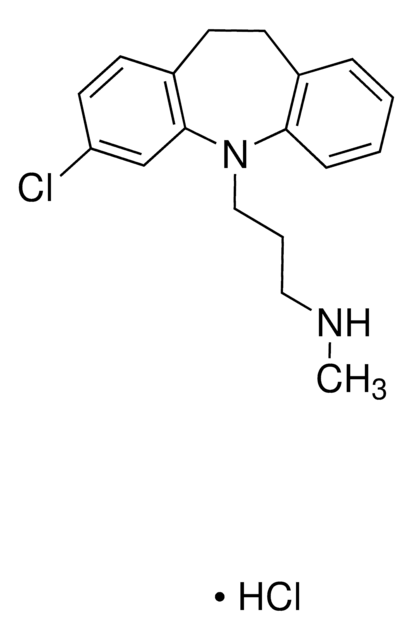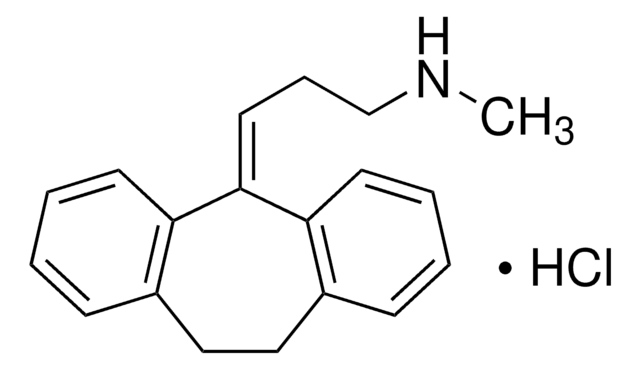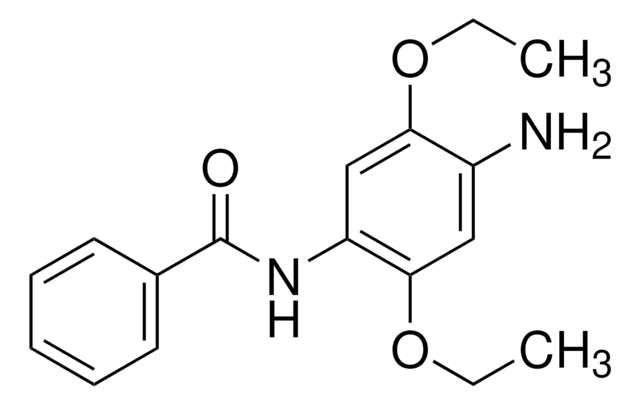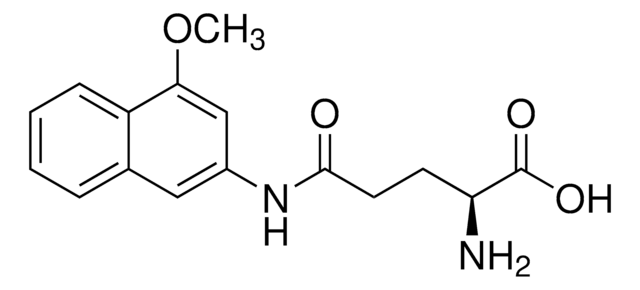F3378
Fast Blue BB Salt hemi(zinc chloride) salt
Dye content ≥80 %, Powder
Sinónimos:
4-Amino-2,5-diethoxybenzanilide diazotated zinc double salt, 4-Benzoylamino-2,5-diethoxybenzenediazonium chloride hemi(zinc chloride) salt
About This Item
Productos recomendados
Nombre del producto
Fast Blue BB Salt hemi(zinc chloride) salt, Dye content ≥80 %
Formulario
powder
Nivel de calidad
composición
Dye content, ≥80%
técnicas
microbe id | staining: suitable
mp
157 °C
solubilidad
H2O: 10 mg/mL
aplicaciones
diagnostic assay manufacturing
hematology
histology
temp. de almacenamiento
−20°C
cadena SMILES
[Cl-].[Cl-].Cl[Zn]Cl.CCOc1cc([N+]#N)c(OCC)cc1NC(=O)c2ccccc2.CCOc3cc([N+]#N)c(OCC)cc3NC(=O)c4ccccc4
InChI
1S/2C17H17N3O3.4ClH.Zn/c2*1-3-22-15-11-14(20-18)16(23-4-2)10-13(15)19-17(21)12-8-6-5-7-9-12;;;;;/h2*5-11H,3-4H2,1-2H3;4*1H;/q;;;;;;+2/p-2
Clave InChI
CMFRFQODFZBKTI-UHFFFAOYSA-L
¿Está buscando productos similares? Visita Guía de comparación de productos
Descripción general
Aplicación
Nota de preparación
Palabra de señalización
Warning
Frases de peligro
Consejos de prudencia
Clasificaciones de peligro
Acute Tox. 4 Oral
Código de clase de almacenamiento
11 - Combustible Solids
Clase de riesgo para el agua (WGK)
WGK 3
Punto de inflamabilidad (°F)
Not applicable
Punto de inflamabilidad (°C)
Not applicable
Equipo de protección personal
dust mask type N95 (US), Eyeshields, Gloves
Elija entre una de las versiones más recientes:
¿Ya tiene este producto?
Encuentre la documentación para los productos que ha comprado recientemente en la Biblioteca de documentos.
Los clientes también vieron
Nuestro equipo de científicos tiene experiencia en todas las áreas de investigación: Ciencias de la vida, Ciencia de los materiales, Síntesis química, Cromatografía, Analítica y muchas otras.
Póngase en contacto con el Servicio técnico